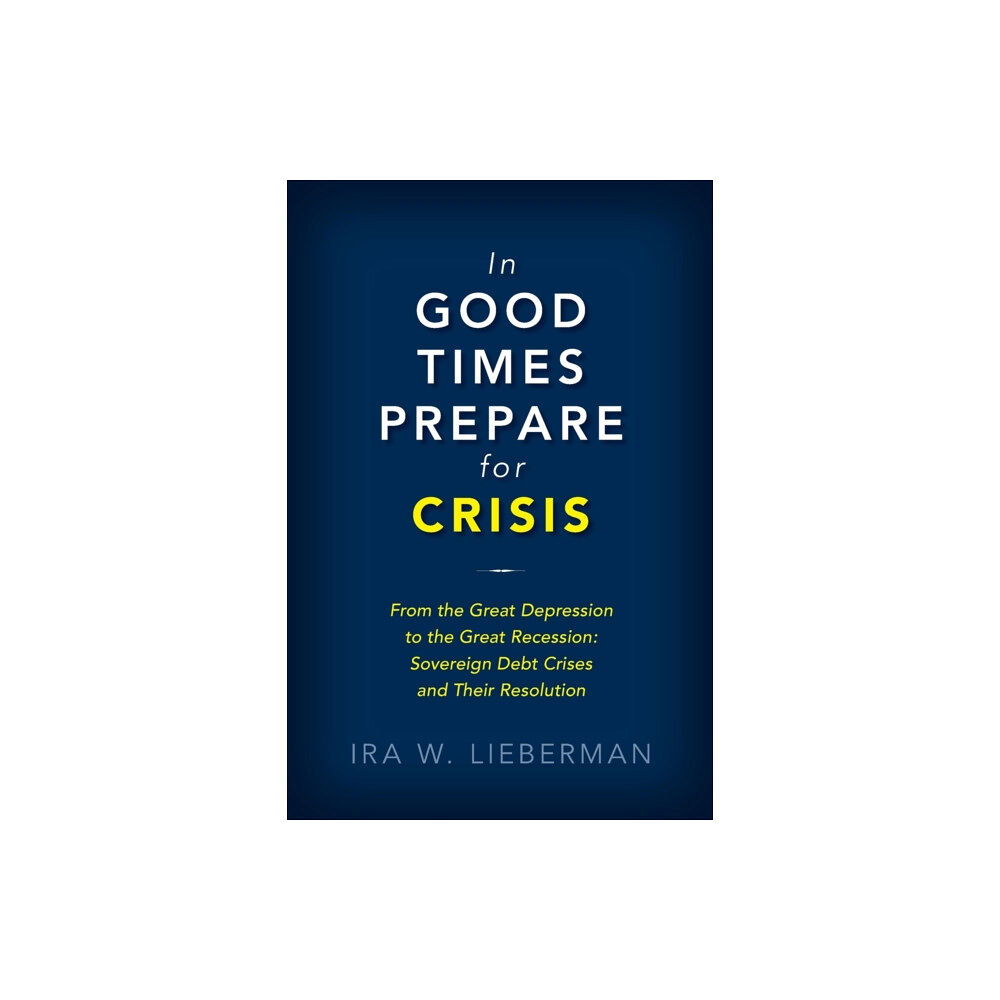- Hem
- Böcker
- Kurslitteratur
- Ekonomi & Företagande
- In Good Times Prepare for Crisis (inbunden, eng)

In Good Times Prepare for Crisis (inbunden, eng)
<div><p>Sovereign debt crises are a little like the weather: One can get ready to endure them and maybe take some steps to lessen thei...
669 kr
Bara 2 kvar
Skickas inom 4 - 5 vardagar
- Fri frakt
Just nu: Fri frakt på alla köp
Snabb leverans
Alltid låga priser
Produktbeskrivning
<div><p>Sovereign debt crises are a little like the weather: One can get ready to endure them and maybe take some steps to lessen their impact, but so far it hasn't been possible to prevent them. Like the weather, they just keep happening. That's the overriding thesis of this book tracing the major debt crises of the past century, starting with the Great Depression and running through the recent Great Recession.</p><p>Written by a former World Bank expert on debt crises, this book discusses best practices for how such crises can be resolved.
As the painful experience of the past decade reminded everyone, frequent debt crises and defaults do great damage to economies and cause vast personal hardship. But resolving them has proven difficult-both economically and politically-and has taken time, almost always requiring a lender of last resort such as a country's central bank or the International Monetary Fund.</p><p>Too often, efforts to end debt crises have been little more than a palliative, and the debt overhang from one crisis contributes to the next, as illustrated by the ongoing saga in Greece.
Both private and sovereign debts have increased substantially since the 2008 crisis, with inadequate deleveraging. This debt overhang leaves countries vulnerable and with limited maneuverability to address the next crisis.</p><p>This book does not pretend to describe how debt crises can be prevented.
But it does draw useful lessons from recent crises that can help economists, bankers, policymakers, and others resolve the inevitable future crises with the least possible damage.</p></div>
As the painful experience of the past decade reminded everyone, frequent debt crises and defaults do great damage to economies and cause vast personal hardship. But resolving them has proven difficult-both economically and politically-and has taken time, almost always requiring a lender of last resort such as a country's central bank or the International Monetary Fund.</p><p>Too often, efforts to end debt crises have been little more than a palliative, and the debt overhang from one crisis contributes to the next, as illustrated by the ongoing saga in Greece.
Both private and sovereign debts have increased substantially since the 2008 crisis, with inadequate deleveraging. This debt overhang leaves countries vulnerable and with limited maneuverability to address the next crisis.</p><p>This book does not pretend to describe how debt crises can be prevented.
But it does draw useful lessons from recent crises that can help economists, bankers, policymakers, and others resolve the inevitable future crises with the least possible damage.</p></div>
| Format | Inbunden |
| Omfång | 552 sidor |
| Språk | Engelska |
| Förlag | Rowman & Littlefield |
| Utgivningsdatum | 2018-10-30 |
| ISBN | 9780815735342 |
Specifikation
Böcker
- Format Inbunden
- Antal sidor 552
- Språk Engelska
- Utgivningsdatum 2018-10-30
- ISBN 9780815735342
- Förlag Rowman & littlefield
Leverans
Vi erbjuder flera smidiga leveransalternativ beroende på ditt postnummer, såsom Budbee Box, Early Bird, Instabox och DB Schenker. Vid köp över 399 kr är leveransen kostnadsfri, annars tillkommer en fraktavgift från 39 kr. Välj det alternativ som passar dig bäst för en bekväm leverans.
Betalning
Du kan betala tryggt och enkelt via Avarda med flera alternativ: Swish för snabb betalning, kortbetalning med VISA eller MasterCard, faktura med 30 dagars betalningstid, eller konto för flexibel delbetalning.
Specifikation
Böcker
- Format Inbunden
- Antal sidor 552
- Språk Engelska
- Utgivningsdatum 2018-10-30
- ISBN 9780815735342
- Förlag Rowman & littlefield
